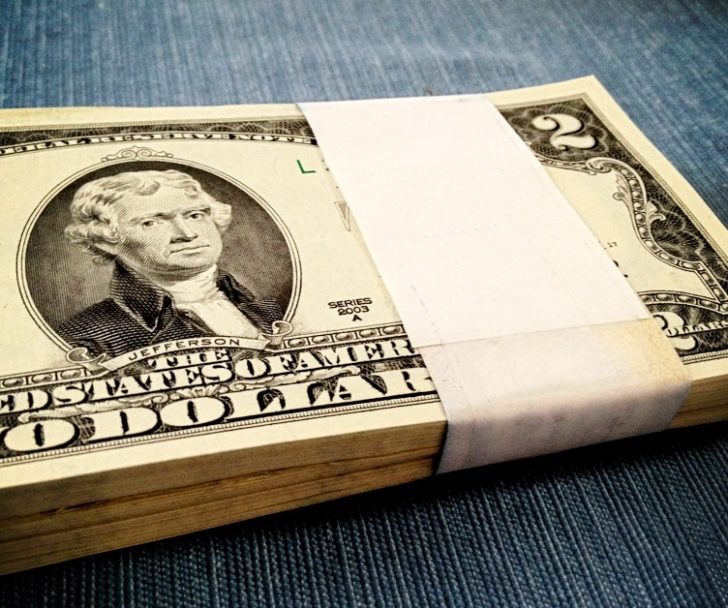Last week I was at the bank, getting cash to repay those who had forwarded deposits for our local Seattle-area meetup. (It still happened, but deposits were no longer necessary.) I was chatting with the teller when she mentioned that she had a stack of $2 bills in the back room someone ordered but never picked up. A few days later, I was back at the bank and left with a stack of 100 $2 bills.

Megan was shaking her head at this point wondering why I pull stunts like this. Who wants a $2 bill? Why are you tormenting people by giving them strange money? In fact, I think lots of people would enjoy receiving a $2 bill. They’re just as good as any other currency. Although you might have a hard time using them at a vending machine, the worst that happens is a person stares at it for a minute and has a good chuckle coming across an unfamiliar denomination.
My intention is to use them for tips. I often find myself running out of $1 bills because I use them to pay for things. If I have special $2 bills, I might remember not to buy stuff with them, saving them for the shuttle bus driver, the maid, or the bell staff. It’s the size of my usual tip for these kinds of services, but now I only need one bill instead of two taking up space in my wallet. They’re also crisp and new, better than giving one that is beat up or ripped (like many $1 bills, which wear faster).
Of course, there’s another common person who get $2 bills as tips: strippers. Because the $2 bill is larger than a $1 bill, its use is encouraged to ensure strippers get more compensation. Bartenders and dealers at casinos also tend to get $2 bills, though I think in that case it might just be for the same reasons I described above: a unique way to offer a fair tip while taking up less space.
Many people mistakenly believe that the $2 bill is no longer legal tender. In fact, new bills were no longer issued after 1966, but the presses were restarted in 1976 and continue to run to this day. What happened is that $2 bills are so rarely seen people think they’re no longer used, so they get saved or returned to the bank. This removes them from circulation and makes them even more rare — kind of like the $1 coin.
Update: I forgot to mention that I have actually seen a denomination that is no longer offered. My grandparents gave me a $500 bill when I was born. I don’t know what happened to it, but it would be interesting to see if my dad still has it in a safe somewhere. Denominations of $500 and all the way up to $100,000 used to exist, although their use was generally limited to settling accounts before electronic transfers were common.
But you should have no problem getting $2 bills from your bank if you ask nicely. As I said, you may have to order them. Just be sure to head back to pick them up. You could also go directly to the source: the Bureau of Engraving and Printing. Steve Wozniak, one of the co-founders of Apple, actually buys uncut sheets from the federal government, has them perforated and bound into notepads, and tears off individual bills as needed. He also has an amusing story of his run-in with the Secret Service in Las Vegas, where they take money very, very seriously. For the short version, just watch this interview with Engadget:
I love his sense of humor! The most cost-effective option to buy your own is a 32-bill sheet (worth $64) for $102. Adding the costs of binding and perforating them, my guess is you’ll pay about $4 per $2 bill if you did it yourself, or you can buy a pad of 25 $2 bills for about $76 from this website. Cost effective? No. But tons of fun. 😉 Now you know what I’ll be doing if I ever become a billionaire like Woz.
